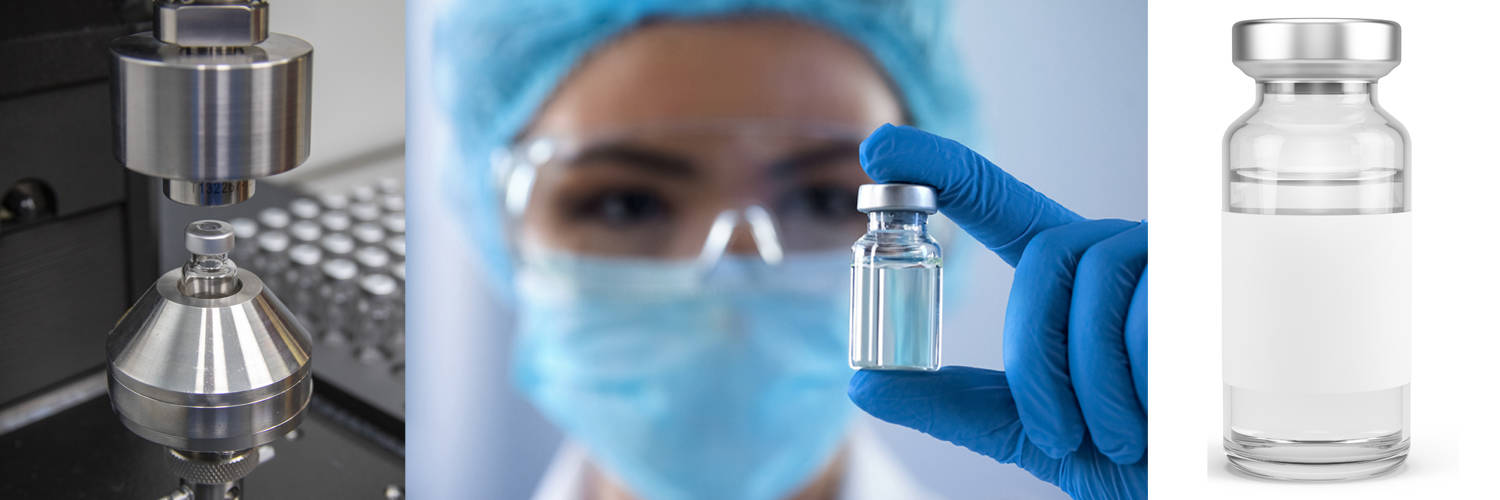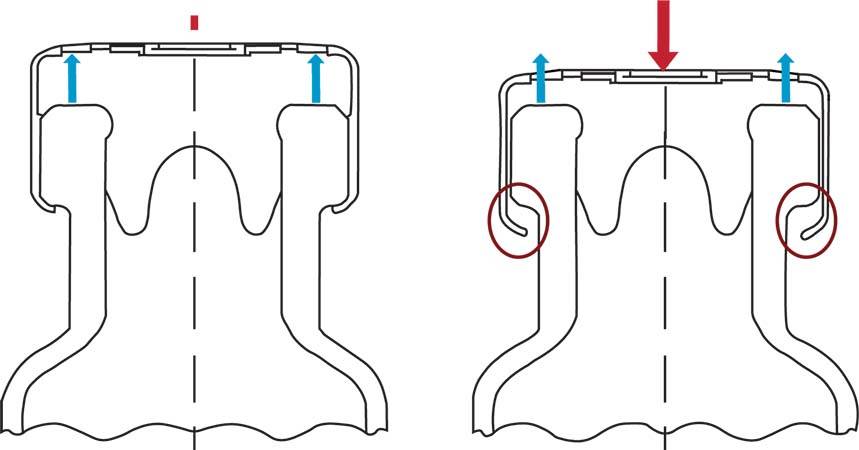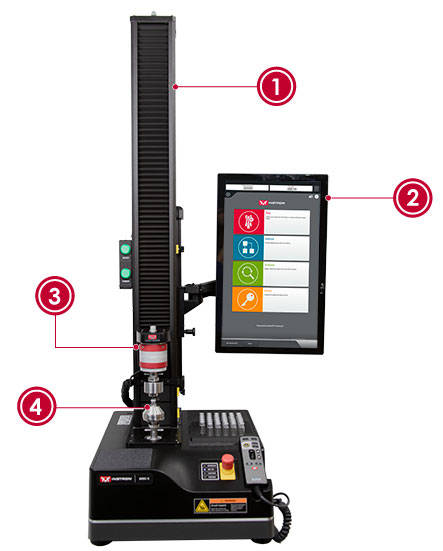Determining the Residual Seal Force (RSF)
MECHANICAL TESTING OF MEDICAL VIALS

Parenteral products such as injectable medications and vaccines are commonly packaged in glass vials. These vials must maintain a robust seal between the glass vial and the elastomeric closure to prevent product contamination and leakage. Residual Seal Force (RSF) is an evaluation of the quality of this seal.
The glass vials subjected to RSF evaluation are used exclusively within the healthcare industry. A perfect example of the importance of RSF testing is the COVID-19 vaccine: some of the vaccines need to be stored at extremely cold temperatures in order to remain effective. Extremely cold temperatures can cause elastomeric materials to contract, which could cause the vial seals to leak. RSF testing can be performed at the full range of possible temperatures to assist manufacturers in evaluating raw materials and assembly processes. This verification is critical in ensuring that products can withstand travel and storage before being administered to the patient.
"Residual s eal force" refers to the force that the elastomeric seal is placing on the aluminum cap of the vial. This force measurement indicates the security of the vial closure. The seal consists of a rubber stopper and an aluminum cap that is crimped onto the vial with an initial force. Over time, this force declines due to the relaxation behavior of rubber, a decay of the force imposed by the cap, and various processing procedures.

The United States Pharmacopeia (USP) outlines standards for the determination of Container Closure Integrity (CCI), a measure of the ability of a container to prevent leakage through non-destructive means. Many studies have shown a correlation between residual seal force values and the CCI performance of the container, prompting many vial manufacturers to adopt RSF testing into their quality program. Residual seal force results can also be correlated to the capping and crimping process, helping manufacturers optimize their cap application settings to maximize CCI.
最高クラスの6800シリーズ試験機のカタログ
インストロン6800シリーズ万能材料試験機は、他に類のない精度と信頼性を提供します。特許申請中のオペレーター保護機能に基づき、最新のスマートクローズエアキットおよび衝突緩和機能を搭載した6800シリーズは、材料試験をかつてないほどシンプルに、スマートに、安全にします。
Bluehill Universalのカタログ
Bluehill Universalソフトウェアは、タッチ操作と直感的なユーザーエクスペリエンスを念頭に構築されています。標準装備の試験メソッド、数秒で行われるQuickTest、強化されたデータエクスポート、そしてサービスとの直接通信を提供する新機能Instron Connectなどの機能が、これまでよりもシンプルでスマートな試験を可能にします。Bluehill 2やBluehill 3などの旧バージョンソフトウェアからは、簡単に最新バージョンのBluehillにアップグレードできます。
